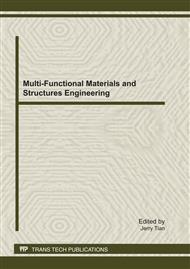p.18
p.24
p.31
p.36
p.41
p.48
p.53
p.59
p.65
Experiment and Simulation of Eddy-Current Loss inside Copper Shielding of Transformers under DC Biasing Condition
Abstract:
With the advent of power electronic technology, the excitation conditions applied to transformers, motors, etc. could be very atypical. DC bias excitation is an undesired working condition of AC power transformers, the asymmetrical saturation of the transformer core, the heavy noise, the serious vibration, and the local loss concentration can all potentially occurred in dc-biased transformers. The effect of the exciting current under different dc-biased magnetization on eddy-current loss in copper plate based on a reduced engineering-oriented benchmark model (TEAM Problem 21) is investigated. Experiment scheme for dc biasing is presented and the distribution of the eddy current loss under different dc-biased excitation conditions was studied in detail. The engineering applicability of three dimensional eddy current analysis methods for dc-biased magnetization field computation and the practical loss modeling are examined, which has been demonstrated via the numerical modeling results and the measured data.
Info:
Periodical:
Pages:
41-47
Citation:
Online since:
July 2011
Authors:
Price:
Сopyright:
© 2011 Trans Tech Publications Ltd. All Rights Reserved
Share:
Citation:


